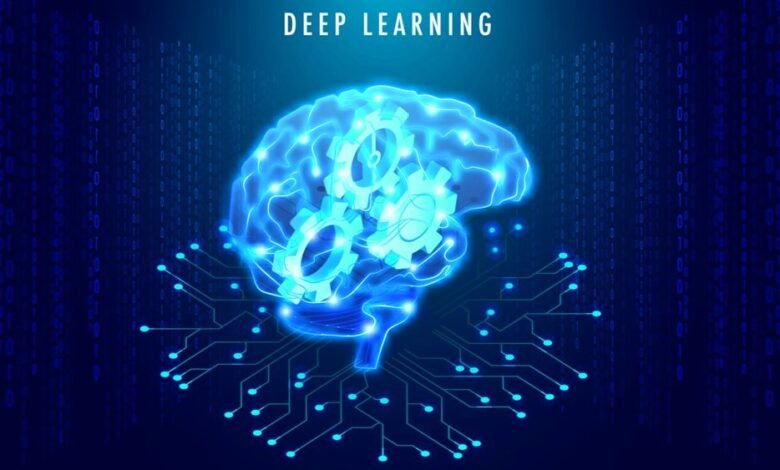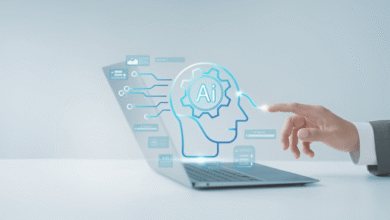What is Deep Learning? Everything You Need to Know

Deep learning is a subset of machine learning that aims to mimic the human brain’s ability to process and understand data.
It involves training artificial neural networks with large amounts of data to recognize patterns and make predictions.
In this article, we’ll delve into deep learning, exploring its fundamentals, applications, challenges, and prospects.
What is Deep learning?
Deep learning is a branch of artificial intelligence that focuses on developing algorithms inspired by the structure and function of the human brain.
Unlike traditional machine learning approaches that rely on manually engineered features, deep learning algorithms can automatically learn representations of data through multiple layers of neural networks.
These networks are capable of processing vast amounts of data and extracting complex patterns, making them suitable for a wide range of tasks such as image recognition, natural language processing, and autonomous driving.
Related: Top 10 AI Tools for Startups and Enhance Your Business!
Basics of Neural Networks
At the heart of deep learning are artificial neural networks, which are computational models composed of interconnected nodes, or neurons.
Each neuron receives input data, processes it using weighted connections, and applies an activation function to produce an output.
The layers of neurons in a neural network are organized hierarchically, with each layer responsible for learning increasingly abstract features from the input data.
Understanding Neurons and Activation Functions
Neurons in a neural network are mathematical representations of biological neurons.
They receive input signals from the previous layer, apply weights to these inputs, and pass the weighted sum through an activation function.
Common activation functions include sigmoid, ReLU (Rectified Linear Unit), and tanh, each serving different purposes in enhancing the network’s learning capabilities and stability.
Types of Deep Learning Algorithms
Deep learning encompasses various algorithms tailored to different types of data and tasks. Some of the most prominent deep learning algorithms include:
Convolutional Neural Networks (CNNs)
CNNs are particularly effective for tasks involving images and visual data. They consist of convolutional layers that learn spatial hierarchies of features, enabling them to detect patterns like edges, textures, and shapes.
CNNs have revolutionized fields such as computer vision, medical imaging, and autonomous driving.
Recurrent Neural Networks (RNNs)
RNNs are designed for sequential data processing, making them ideal for tasks like natural language processing, speech recognition, and time series analysis.
Unlike feedforward networks, RNNs have connections that loop back on themselves, allowing them to maintain memory of past inputs and context.
Generative Adversarial Networks (GANs)
GANs are a class of deep learning models that excel at generating new, realistic data samples. They consist of two neural networks—a generator and a discriminator—locked in a competitive game.
The generator aims to produce synthetic data that is indistinguishable from real data, while the discriminator tries to differentiate between real and fake data. GANs have applications in generating images, videos, music, and text.
Applications of Deep Learning
Deep learning has made significant impacts across various industries, driving innovation and automation in numerous domains. Some notable applications of deep learning include:
- Image and video analysis: object detection, image classification, video surveillance.
- Natural language processing (NLP): sentiment analysis, machine translation, chatbots.
- Healthcare: medical image analysis, disease diagnosis, drug discovery.
- Autonomous systems: self-driving cars, robotics, drones.
- Finance: fraud detection, algorithmic trading, risk assessment.
- E-commerce: recommendation systems, personalized marketing.
The versatility and scalability of deep learning algorithms make them indispensable tools for tackling complex problems and extracting valuable insights from large datasets.
Challenges and Limitations
Despite its remarkable capabilities, deep learning is not without challenges and limitations. Some of the key challenges in deep learning include:
- Data quality and quantity: Deep learning models require large volumes of high-quality labeled data for effective training, which can be costly and time-consuming to acquire.
- Interpretability and explainability: Deep learning models often operate as black boxes, making it challenging to interpret their decisions and provide explanations, especially in critical applications like healthcare and finance.
- Overfitting and underfitting: Balancing model complexity and generalization is crucial to prevent overfitting (memorizing training data) or underfitting (failing to capture data patterns).
- Computational resources: Training deep learning models can be computationally intensive, requiring powerful hardware resources and efficient algorithms.
Addressing these challenges is essential for advancing the capabilities and reliability of deep learning systems, especially in domains where transparency, reliability, and ethical considerations are paramount.
Future Trends in Deep Learning
Due to ongoing research and technological advancements, the field of deep learning is constantly evolving. Some of the key trends and developments shaping the future of deep learning include:
Explainable AI (XAI)
Efforts are underway to develop techniques that enhance the interpretability and transparency of deep learning models. Explainable AI aims to provide insights into how models make decisions, improving trust, accountability, and regulatory compliance.
Federated Learning
Federated learning enables the training of machine learning models across decentralized devices or servers while preserving data privacy. This approach is particularly relevant for applications in healthcare, finance, and the IoT (Internet of Things), where data confidentiality is critical.
Quantum Machine Learning
The intersection of quantum computing and machine learning holds promise for solving complex optimization problems and accelerating deep learning tasks. Quantum machine learning algorithms may revolutionize areas such as cryptography, drug discovery, and climate modeling.
Neuromorphic Computing
Neuromorphic computing aims to create hardware systems that mimic the parallel processing and energy efficiency of neural networks. Neuromorphic chips could enable faster and more energy-efficient deep learning inference and training.
Ethical AI Frameworks
As deep learning systems become more pervasive, there is a growing emphasis on developing ethical AI frameworks and guidelines. These frameworks address concerns such as bias mitigation, fairness, accountability, and the responsible use of AI technologies.
Conclusion
Deep learning represents a transformative approach to artificial intelligence, enabling machines to learn from data and perform complex tasks with human-like capabilities. Its wide-ranging applications, from image recognition to natural language understanding, have fueled innovation and automation across industries.
As deep learning advances, addressing challenges such as interpretability, scalability, and ethical considerations will be paramount. By harnessing the potential of deep learning technologies responsibly, we can unlock new opportunities for solving real-world problems and shaping a more intelligent and inclusive future.
FAQs
What is the difference between deep learning and machine learning?
Deep learning is a subset of machine learning that uses neural networks with multiple layers to learn from data, while machine learning includes various algorithms for learning patterns from data.
How does deep learning work in image recognition?
Deep learning models like CNNs learn to recognize patterns and features in images through layers of neurons trained on labeled image data.
What are some common challenges in training deep learning models?
Challenges include acquiring quality labeled data, avoiding overfitting or underfitting, selecting suitable architectures and parameters, managing resources, and ensuring model interpretability.
What are the ethical considerations when deploying deep learning systems?
Ethical considerations include addressing biases, ensuring transparency, protecting data privacy, and deploying AI responsibly to minimize negative impacts.
What are the prospects for deep learning technology?
Prospects include explainable AI, federated learning for privacy, quantum machine learning, neuromorphic computing, and developing ethical AI frameworks.











